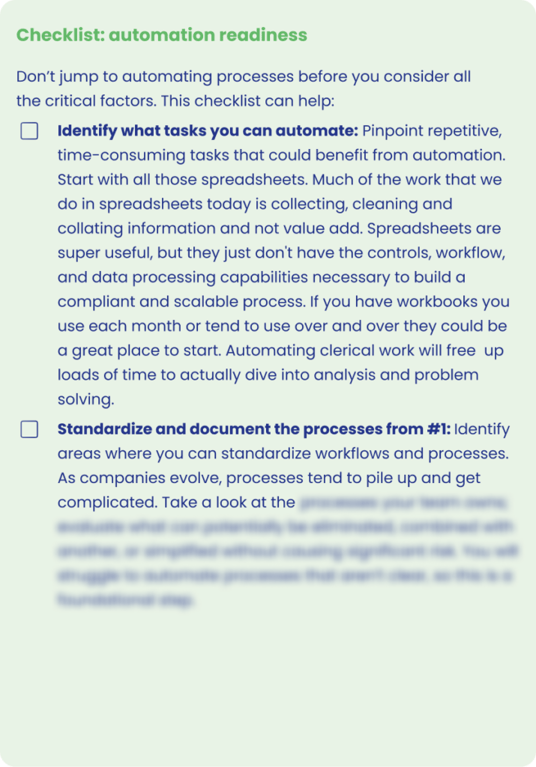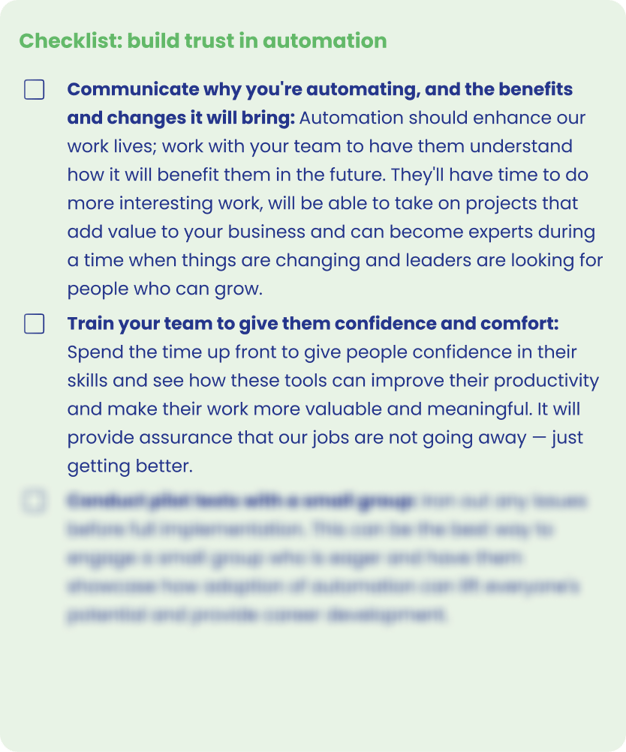Introduction
Economic volatility and personnel reductions underscore the significance of maintaining robust, efficient financial operations. For Accounting leaders handling high transaction volumes, this challenge also presents an opportunity for profound transformation with strategic automation.
Accounting leaders who read this guide will learn:
- The critical role of automation in managing high transaction volumes efficiently and accurately, especially with a lean team.
- The importance of leadership in fostering a culture of change, essential for transitioning to a more automated environment.
- How to equip your lean team to manage the demands of efficient and compliant financial operations.
This guide will provide practical and actionable advice to help Accounting leaders like you transform these challenges into opportunities for growth and efficiency.
Embrace automation
The role of automation in a lean team
When your team is lean, automation becomes a must-have to cope with high transaction volumes and maintain the integrity of financial operations.
Automation isn’t just about not doing repetitive tasks manually. Automation also improves data accuracy by reducing the chance of manual errors. That’ll save you a lot of time downstream on data reconciliation. For a small team, automation frees your team from repetitive and low-value tasks so they can focus on strategic responsibilities that might otherwise not get done at all.
Automation also helps you scale as your company grows. With an effective automation strategy in place, the increasing transactional activity won’t overwhelm your team or require you to hire as quickly.
Checklist: automation readiness
Note: You can access the full checklist as a PDF by clicking here.

Build trust and anticipate resistance
Involve your team so they feel a sense of control
One of the greatest challenges in implementing automation is overcoming resistance to change. This is especially true when introducing new technologies to an already lean and overworked team. However, by building trust in automation, you can ensure a smoother transition and greater acceptance of the new systems.
Trust in automation comes from understanding its benefits and seeing its positive impacts. When team members can see how automation makes their jobs easier and how it improves overall operations, they’re more likely to embrace it.
Furthermore, by involving team members in the automation implementation process, you allow them to gain a sense of ownership and control. This active involvement not only aids in successful implementation but also contributes to building trust in the new system.
Checklist: build trust in automation
Note: You can access the full checklist as a PDF by clicking here.

Conclusion
Adapting to a lean team structure in an era of high transaction volumes can be challenging, but it isn’t impossible. By acknowledging the reality of your situation, embracing automation, and building trust in technology, you can transform these challenges into opportunities.
This transformation doesn’t happen overnight, but with strategic planning and implementation, you can succeed. Through it all, remember that change isn’t a journey that you need to undertake alone. The right partners and tools can make your path smoother and your destination achievable.
Leapfin, your trusted partner in automation, is ready to help you every step of the way. Together, we can integrate disparate operational data sources, turn operational data into financial records, and automate the generation of journal entries at a transaction level daily. We publish them directly into your ERP system, offering you the level of detail you want, as often as you need.
We hope this guide has been a useful tool in navigating your current challenges. For further assistance or to discuss personalized strategies for your situation, please reach out to us.
See how Leapfin works
Get a feel for the ease and power of Leapfin with our interactive demo.
